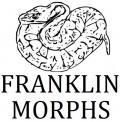» Site Navigation

1 members and 695 guests
Most users ever online was 47,180, 07-16-2025 at 05:30 PM.
» Today's Birthdays

» Stats

Members: 75,905
Threads: 249,104
Posts: 2,572,103
Top Poster: JLC (31,651)
|
-
Registered User


Update for anyone intersted. I got ahold of a company that is importing from the company that makes AGPtek, WillHi and many other of these chinese manufacture controllers and have a temperature controller and humidity controller on the way from China. Got one of each on the way now to set up and test out and I'll let you guys know. I have to admit, I got an amazing deal, possibly because I told the guy that if it worked well, I would need about a dozen more of each.
He was able to get me an ITC-1000 set up for 110V AC. The interesting thing I found out is that they use the same relay for the 110V adn 220V models, which is rated at 10A at 250V, so at 110V, it should easily handle north of 15A, or well over 1500W. Absolute overkill, but that will mean that the solid state relay should not have any overheating issues in our applications.
He was also able to set me up with my preffered Hygrometer. A WH8040 model MH13001, and in 12V DC. This will allow me to use a less expensive and more reliable purely DC system on the humidifier circuit, as the fan and the ultrasonic mist generators are both DC themselves, and building my own humidifier will allow me to install a float valve in the water circuit so I don't have to constantly fill it and try to retain the water level at closer to optimum levels to keep the mist generator working efficiently. I will have to do some work on the air flow direction to try and keep as much water suspended as possible and get the lift I need. It would seem, off hand, that a cyclical motion in the air would assist with particulate suspension at higher flow rates, so long as I am not forcing the mist to change direction too sharply.
Lastly, I went by my local hardware stores to look into how to piece this whole mess together, and spent some time with my current household humidifier playing with condensation and lift to see what I need to do there. Lift is going to be an issue with anything off the shelf I've decided. In a piece of 2" ABS I wasn't able to get anything more than 4 feet of pipe in before I got MAJOR lack of flow from the system. So, in poking around at Lowes today I've decided to use a 2" main stack, inverted sanitary T's(to help allow the mist to drop down into the Ts instead of having to make a hard angle, or curve upward) then immediately drop to a 3/4" tube to restrict flow, with an inline ball valve to help me even flow out between all the tubs, then back into a 1-1/2" adapter, that slips quite nicely into a 2" drain cap. That will allow me to install the drain cap into the tub, so the snake can not escape, and will slip together and apart easily to allow the bins to slide in and out, exactly what I had wanted, if a bit over-complicated.
The reason for the 3/4" reduction in the middle there, combined with the ball valve is two fold. Firstly, 3/4" will still be more than enough flow, second it will make regulation with a ball valve easier as I won't be having to make absurdly tiny changes as I would with a 2" ball valve, and finally, the 3/4" ball valve is only 25% the cost of the 2".
I do have one question after further mulling on the design and layout, due to the sheer number of hatchling tubs in may rack designs, it seems excessive to do a controller and sensor for each tub, especially given the tub sizes. I would tend to think that the hatchlings will enjoy/prefer higher humidity to begin with, so would it not be reasonable to just have them get some mist when the rest of the rack gets mist and not set up triggers in their tubs, especially if a row of hatchling tubs(3 or 4 per row) will all be run on a single temperature controller anyway?
-
 Posting Permissions
Posting Permissions
- You may not post new threads
- You may not post replies
- You may not post attachments
- You may not edit your posts
-
Forum Rules
|










 Reply With Quote
Reply With Quote